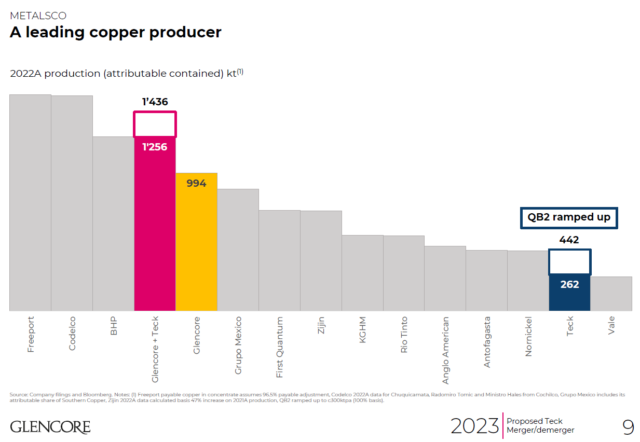Previous edition (Round 3).
On April 26, 2023, Teck had to tuck in its tail and announce that the division between its mining and coal units would be postponed and that the board would consider a more simplified option. They could not get a 2/3rds majority vote.
Today, we have news that a Canadian mining titan, Pierre Lassonde, is interested in purchasing the coal mining unit of Teck for an undisclosed price.
This isn’t exactly a known secret – there was an article just a month ago about this.
My guess is that this is just media-baiting to facilitate more selling of the stock.
Price is everything. Using an unlevered 2x/EBITDA (which would be a price that clearly anybody would salivate getting a relatively stable business for), the coal unit would fetch a pre-tax $15 billion, or just under half of Teck’s market cap.
Perhaps the scheme is to put up $5 billion in equity, and borrow $10 billion (half of it can be a flat-out debt offering, and the other $5 billion can be functionally borrowed from Teck in exchange for a 5-10% perpetual revenue royalty or some other form of financial engineering), and suddenly you have the makings of a very asymmetric transaction – on the buy-side, your ROE will be insanely huge, while on the sell-side, Teck hopes to receive a re-rating on its stock AND retain some cash flow to fund the capital expenditures of your future copper mines. Win-win!
Glencore would surely be interested in the assets as well, but in either case, the palms of the government will have to be greased to facilitate this.
From a psychological standpoint, it feels like that the cited pipeline of physical copper shortages is reaching a feverish pitch. It is being spoken as if it is conventional wisdom, and that makes me very cautious with respect to the market.
I remember this script playing out before – Potash Corp was going to be taken over by BHP in 2010, but the government put the brakes on this in short order. A strategic difference is that Teck’s copper operations mainly lie in South America, while Potash Corp’s reserves were in Canada.
However, Teck’s coal mining operation is situated in British Columbia. Perhaps Lassonde thinks that he can obtain the assets for cheaper than Glencore via less regulatory stress.
Teck’s stock is trading at a price that it has not seen for over a decade. Teck’s history in the past has always been punctuated by massive booms and busts – with the current cycle obviously being in boom territory (fortunes were made if you got in during the busts!). While it is likely that their copper operations will make bundles of money, the question then becomes one of valuation – my deep suspicion is that this baseball game being played is down to the last three innings. I also very much doubt that shareholders are going to get an exit decided for them (i.e. I think the chances of an outright sale of the coal unit and a subsequent special dividend is next to nothing). There’s too much of a management incentive to keeping the company’s gravy train going for at least another few years.
Finally, in today’s edition of “everybody has to be a macroeconomist to invest in this market”, while all indications suggest that the economy is still humming along, commodities at the later stages of an economic cycle are the textbook asset that you don’t want to be exposed to. There are other mitigating factors (i.e. the inflation and monetary policy situation), but given the contraction of liquidity in the US (not to mention the looming debt crisis), coupled with mixed messages, makes me very defensive about matters. My crystal ball, while seeing some patches of clarity here and there, still remains considerably murky.

